You and I are ending this week looking back three days, Friday morning quarterback style, wondering how the U.S. 2022 midterm elections could impact health and health care in America.
We can never know with 101% certainty the answer to this question following any U.S. election. This year’s midterms leave us especially in need of scenario planning, especially as on this day, we still do not know what the final balance of power in the U.S. Congress will be. Nor can we ascertain, just yet, what the jockeying for power within both the Democratic party and the Republican party will yield over the coming weeks. And we’ll still have to wait for December 6th to get a final number on the Senate’s composition given the run-off election between Sen. Raphael Warnock (D) and Heisman Trophy winner Herschel Walker (R), neither of whom received over 50% of Georgians’ votes on 8th November 2022.
In the meantime, Kaiser Family Foundation has assembled an interactive dashboard on health care in the 2022 midterms, mining data across several key health care issues on voters’ minds and ballots. Here are a few key lenses on health care in the midterms I’ll share in today’s Health Populi, keeping next week’s HLTH conference in mind for conversations and implications….
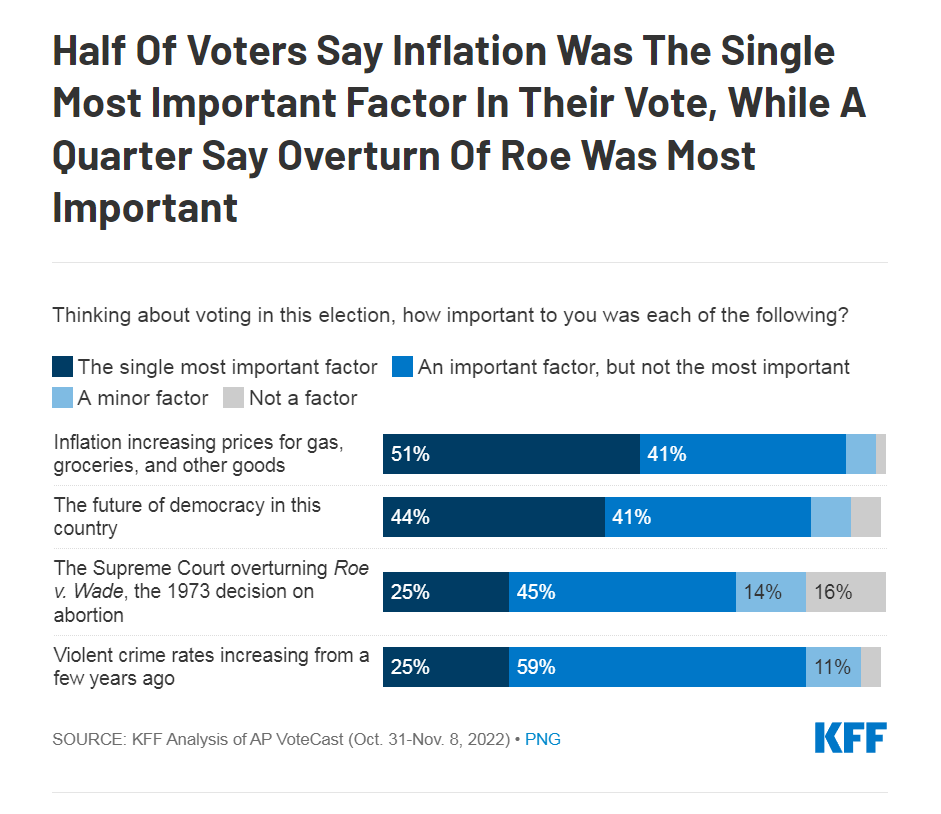
Inflation was the top issue on voters’ minds for the 2022 U.S. midterms, closely followed by “the future of democracy” in America.
Concerns about crime netted out very important, too, with the Supreme Court’s overturning Roe v Wade’s provision of abortion access important to 70% of voters.
While the veracity of abortion and the Dobbs decision netted out a lower-level “single most important” factor, this would turn out to be a key issue in the very tight election margins across the U.S. — from Kentucky to Michigan and elsewhere where women’s health access was on state ballots.
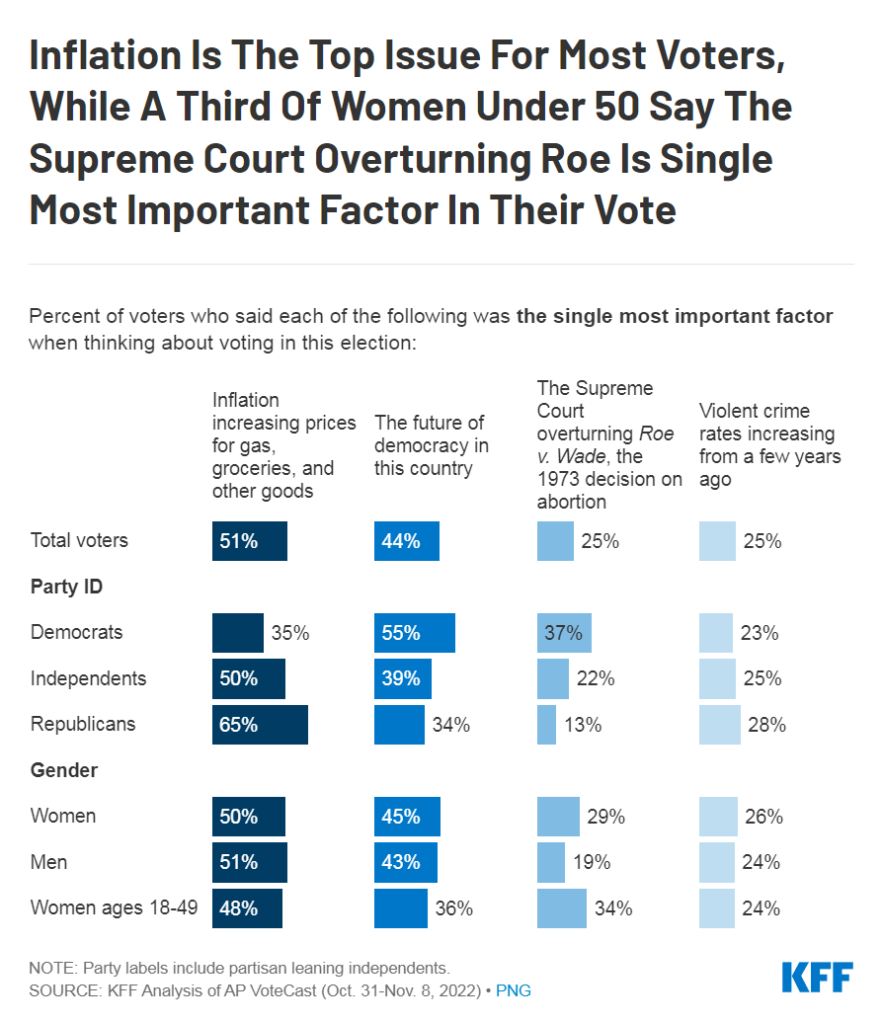
Inflation for household spending was the single most important factor for 50% of voters, followed by the future of democracy across all voters.
By party, it was Democrats more likely to be concerned about the future of democracy, and even more Republicans concerned about inflation.
The call-out statistics on this chart are women between 18-49 and Democrats under the Supreme Court overturning Roe v. Wade, as this segment would turn out to be quite influential in some of the surprising outcome (preliminarily speaking) of this week’s “non-shellacking” of a Red Wave — that is, the expectation based on historical mid-term elections that the party in Presidential power would be over-turned by the other party in Congressional and Gubernatorial elections.
This has not been the case, and was — again, in this Friday morning political quarterback moment — a November surprise.
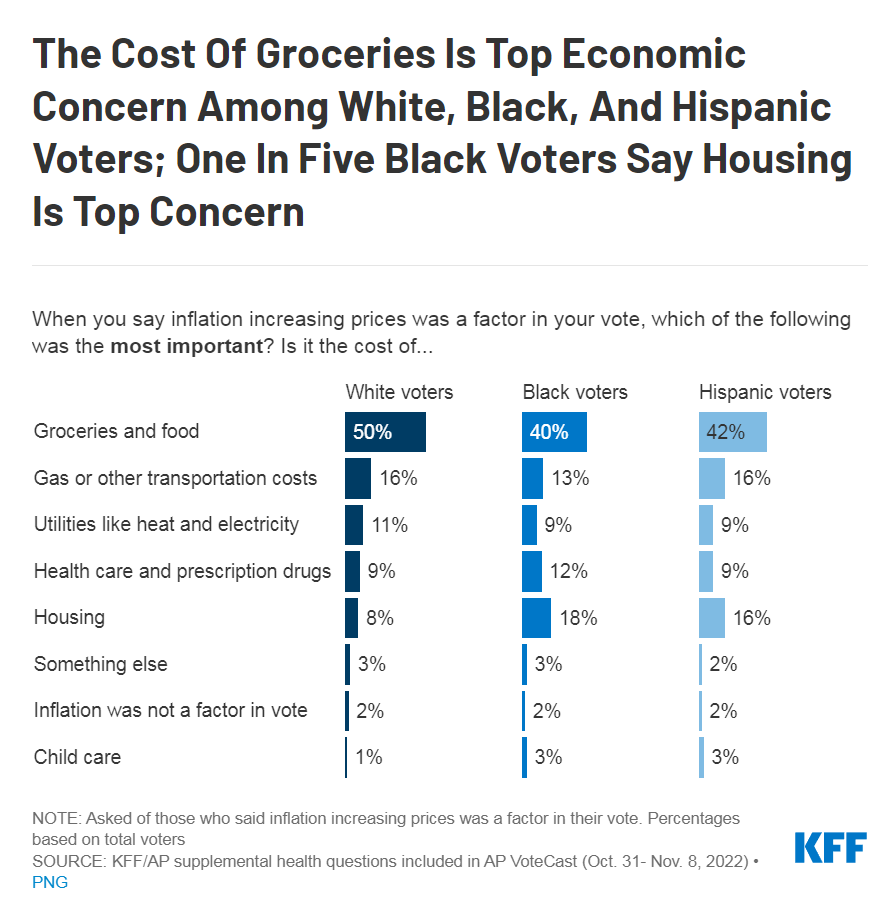
Another important view on the KFF data dashboard is getting granular on race/ethnicity with respect to key economic and social issues on voters’ minds. While the cost of groceries and foods ranked highest across all U.S. voters in the 2022 mid-term elections, the issue of housing costs was on more minds of people who were Black or Hispanic — clearly illustrated in the third chart from Kaiser Family Foundation’s data analysis.
Roughly double the percentage of Black and Hispanic voters were very concerned about housing costs compared with White Voters.
Remember that housing is a key driver of health.
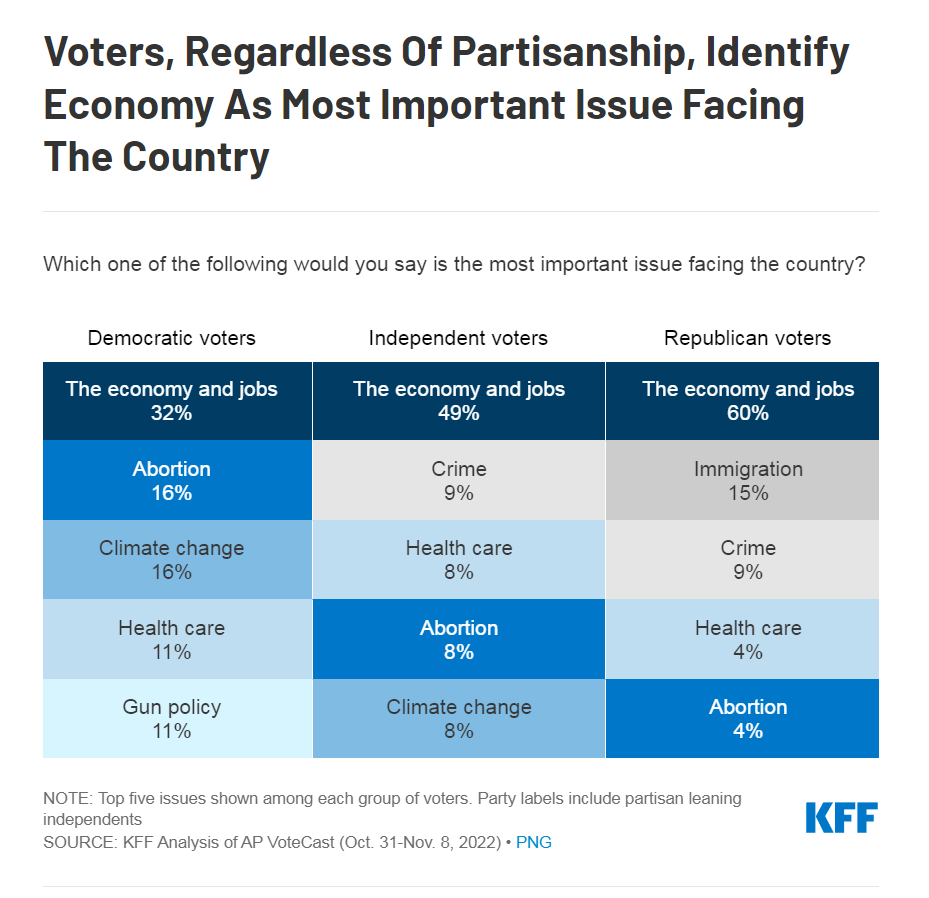
Health Populi’s Hot Points: Health care is the economy, which we came to increasingly appreciate in and in the wake of the COVID-19 pandemic. Climate change, too, is bound up in public and individual health, and in economic effects exacted by hurricanes, floods, and natural disasters leading to physical and mental health impacts.
“Unlike in other US social movements, such as the environmental and civil rights movements, the necessary understanding of shared values has not yet been achieved for health,” a team of six authors wrote in a November 2016 essay in Health Affairs, Drivers of Health As A Shared Value: Mindset, Expectations, Sense of Community, And Civic Engagement.
“Making health” is one of the action areas being worked on by the Robert Wood Johnson Foundation, where a “shared understanding” of health as a cultural value is embedded.
“Equity, allowing all people the opportunity for good health and eliminating disparities, is a critical component of making health a shared value,” the essay asserts.
They point out that there have been successful social movements for health such as those seen in the HIV/AIDS community and, before COVID-19, effective campaigns to boost the rate of immunizations/vaccinations.
To shift social expectations around health, people must see health and well-being as something all have the opportunity to achieve, the authors note — not a privilege based on socioeconomic status or specific geography.
One way to shift a mindset is to explain the benefits of “equitable health opportunities” where truly, one person’s health and well-being directly impacts their immediate networks and those networks’ social networks.
One of the collective equitable health opportunities is around women’s health, which should be an ecosystem of services that cover a women’s life-cycle — from prenatal care to childhood and adolescent care (embedded with mental and physical health service), contraceptive care and STD prevention, fertility and pregnancy, post-natal health (again, attending to holistic services that including mental and behavioral health), menopause management, and all the way through the woman’s life attending to sexual health through aging well.

The HLTH conference will feature a plethora of services and tools that focus on women’s health. As a good connect-the-dots story for HLTH, note that Jean Chatzy, financial columnist, will be talking about her book AgeProof: Living Longer Without Running Out of Money or Breaking a Hip. Draw another connection in the women’s well-being ecosystem to Alexandra Drane, Founder of ARCHANGELS, who will discuss the caregiving crisis and opportunity to raise up and support caregivers (largely, women). Then take a look at dozens of innovations to support women’s medical care and well-being that will be featured on the convention floor, from preventive through to remote health monitoring of conditions from home.
To kick off a virtuous cycle of flywheel impact and shared health, it’s all sectors on deck across industries that, together, touch peoples’ lives across the personal and public continua of care.
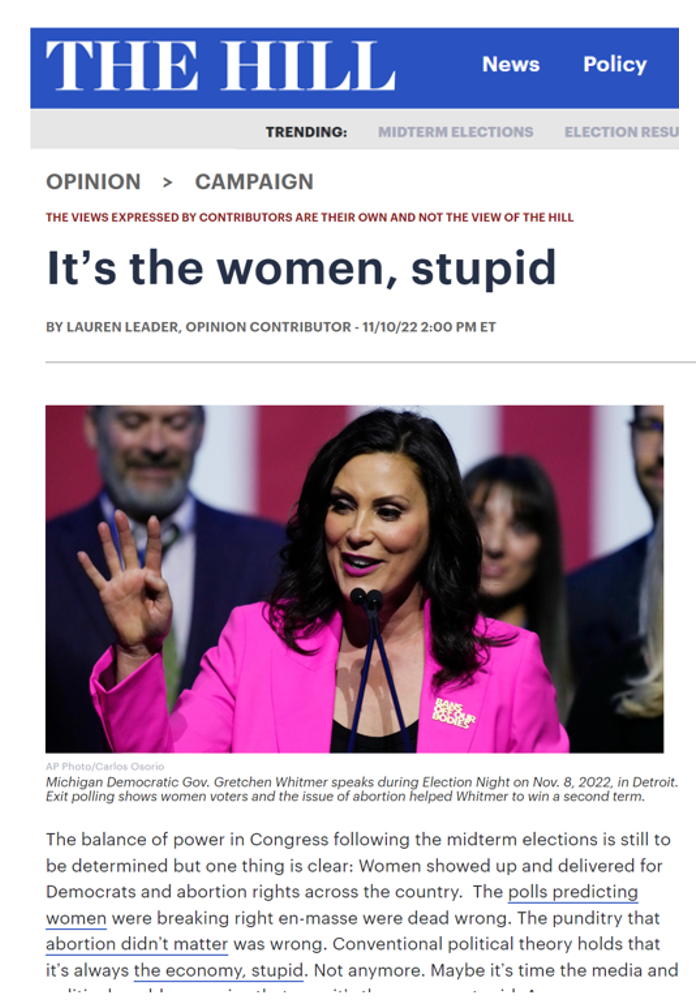
Note that U.S. health citizens called out the cost of food, fuel, housing and health care as top of mind for voting in the 2022 midterm elections. The economy, overall, was a uniting force at the end of 2022, and certainly was for women who tend to be the CEOs and Chief Health/care Officers of their homes and families.
Women voters as a political and economic force were key actors in this year’s midterms, which I forecasted in some detail here in Health Populi in August earlier this year. For more about Election Day 11-8-22 and the role of women, lost in the polling, see this insightful piece by Lauren Leader in The Hill, It’s the Women Stupid.
Women’s health, the price of food and energy, and housing are issues that connect most people, most of the time. Finding ways to ally, align, and collaborate on these drivers of health will help foster a sense of community, civic engagement, and that elusive culture of health in America. I’ll be using HLTH’s opportunities to learn more about health equity, drivers of health, and the innovations to foster this flywheel of shared health and civic engagement.





 Interviewed live on BNN Bloomberg (Canada) on the market for GLP-1 drugs for weight loss and their impact on both the health care system and consumer goods and services -- notably, food, nutrition, retail health, gyms, and other sectors.
Interviewed live on BNN Bloomberg (Canada) on the market for GLP-1 drugs for weight loss and their impact on both the health care system and consumer goods and services -- notably, food, nutrition, retail health, gyms, and other sectors. Thank you, Feedspot, for
Thank you, Feedspot, for  As you may know, I have been splitting work- and living-time between the U.S. and the E.U., most recently living in and working from Brussels. In the month of September 2024, I'll be splitting time between London and other parts of the U.K., and Italy where I'll be working with clients on consumer health, self-care and home care focused on food-as-medicine, digital health, business and scenario planning for the future...
As you may know, I have been splitting work- and living-time between the U.S. and the E.U., most recently living in and working from Brussels. In the month of September 2024, I'll be splitting time between London and other parts of the U.K., and Italy where I'll be working with clients on consumer health, self-care and home care focused on food-as-medicine, digital health, business and scenario planning for the future...